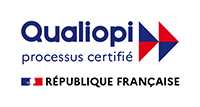Training in the XRD technique for laboratories

Master the XRD technique to optimise your analytical chemistry analyses
The X-ray diffraction (XRD) technique is an essential method for identifying crystalline phases and analysing the structure of materials used in various industrial sectors.
FILAB offers tailor-made training courses dedicated to this method, to help industries master and interpret diffraction data in their development and quality control processes.
objectives
To highlight the residual austenite in a metal alloy
Qualifying foundry slags
Determination of crystal impurities in a cementitious material
Characterize bone substitutes
Pedagogical resources
- Screening of training material
- Handover of training material
- Training led by experts in the techniques required
Target audience
Technicians or engineers in charge of research & innovation, process & industrialisation, production & maintenance, quality control, health, safety & environment, purchasing & supplies …
Program
For more information on the program, please contact us
Information updated on 07.10.2024
Practical information
- In-company training
- Questionnaire at the beginning and end of the course (Quizzes)
- Attendance sheet
- Duration: 2 days
- PRM and PSH accessibility
- Adaptable to customer needs
- Price on quotation
- No pre-requisites required for this course
- A certificate of completion will be issued at the end of the course.
Our training courses are accessible to people with disabilities. We will offer you solutions for adaptations (e.g. training aids, pace of training, teaching support, etc.) and adjustments to suit your needs.
Why take an X-ray diffraction course?
X-ray diffraction (XRD) is a powerful and indispensable analytical method for industries with specific needs in the characterization of materials.
It enables crystalline phases to be precisely identified, atomic structures to be analysed and key information on mineralogical compositions to be obtained.
Training in XRD gives you a command of this technique, which is essential for developing your R&D projects, optimising your production processes and improving the quality of your products. Our Filab experts will work with you step by step to enhance your skills and guarantee reliable, usable results.
Why should you call on FILAB for XRD training?
You have just acquired a XRD in your laboratory? The competent person(s) are no longer part of your team? Would you like to improve your expertise in XRD analysis and the exploitation of results?
Whether you are involved in research, innovation or solving specific problems, when you call on Filab for X-ray diffraction training, you benefit from solid know-how and recognised expertise in X-ray diffraction.
As an accredited training organisation, FILAB supports your teams in the use of the X-ray Diffraction (XRD) analysis technique, whatever your sector of activity.
The industries concerned
The XRD technique meets the requirements of many industrial sectors. It is particularly useful for :
- The pharmaceutical industry, for characterising polymorphs and crystalline forms of drugs.
- The construction materials industry, for analysing mineral phases and cementing products.
- The aerospace and automotive industries, to study the composition of alloys and ceramics.
- Energy, for research into new materials and the characterization of catalysts.
- The environment, for soil and mineral contaminant analysis.
Filab helps players in these sectors to develop their skills in XRD for practical, innovative applications.
What is the principle of X-ray Diffraction?
X-ray Diffraction (XRD) is an analytical technique that can be used to study the different phases of crystalline materials.
The principle of XRD is two fold:
- Identifying and quantifying the chemical elements that make up a material
- Access to a wealth of information contained in the very arrangement of elements within a material.
Qualitative analysis identifies the crystalline compound(s) present in a material and their crystallographic forms. Quantitative analysis enables the content of these compounds to be determined, both in trace form and as major compounds, by refinement using the Rietveld method or by specific calibration.
The advantages of the XRD technique
X-ray diffraction offers unique advantages for materials analysis:
- Precision : fine identification of crystalline phases, guaranteeing detailed analysis of composition.
- Speed : results obtained in a short space of time, enabling rapid decision-making.
- Versatility : a technique that can be applied to a range of materials, from metals and ceramics to polymers and powders.
- Reproducibility : reliable, consistent measurements, ideal for quality control and production monitoring.
XRD is the tool of choice for any company seeking to guarantee the quality of its products and improve its production processes. At Filab, our approach to training enables professionals to take full advantage of it for analyses that are both efficient and cost-effective.
Registration and Quotation
To register for the course or to obtain a quote, please contact us directly by email or telephone.
Training will start within 3 months of acceptance of the agreement.
FAQ
To guarantee that materials are free from contaminants that could alter their mechanical, thermal or chemical properties, and so optimise their use in critical applications.
To accurately measure impurities to ensure the durability, stability and performance of cementitious materials in demanding construction environments.
To identify and quantify this phase in order to adjust heat treatments and improve the mechanical strength of alloys in industry.
To analyse the structure and purity of hydroxyapatite (HAP) powders, in accordance with NF ISO 13779-3, to guarantee their biocompatibility and optimal integration into biomedical applications.
To analyse the structure and purity of hydroxyapatite (HAP) powders, in accordance with NF ISO 13779-3, to guarantee their biocompatibility and optimal integration into biomedical applications.








